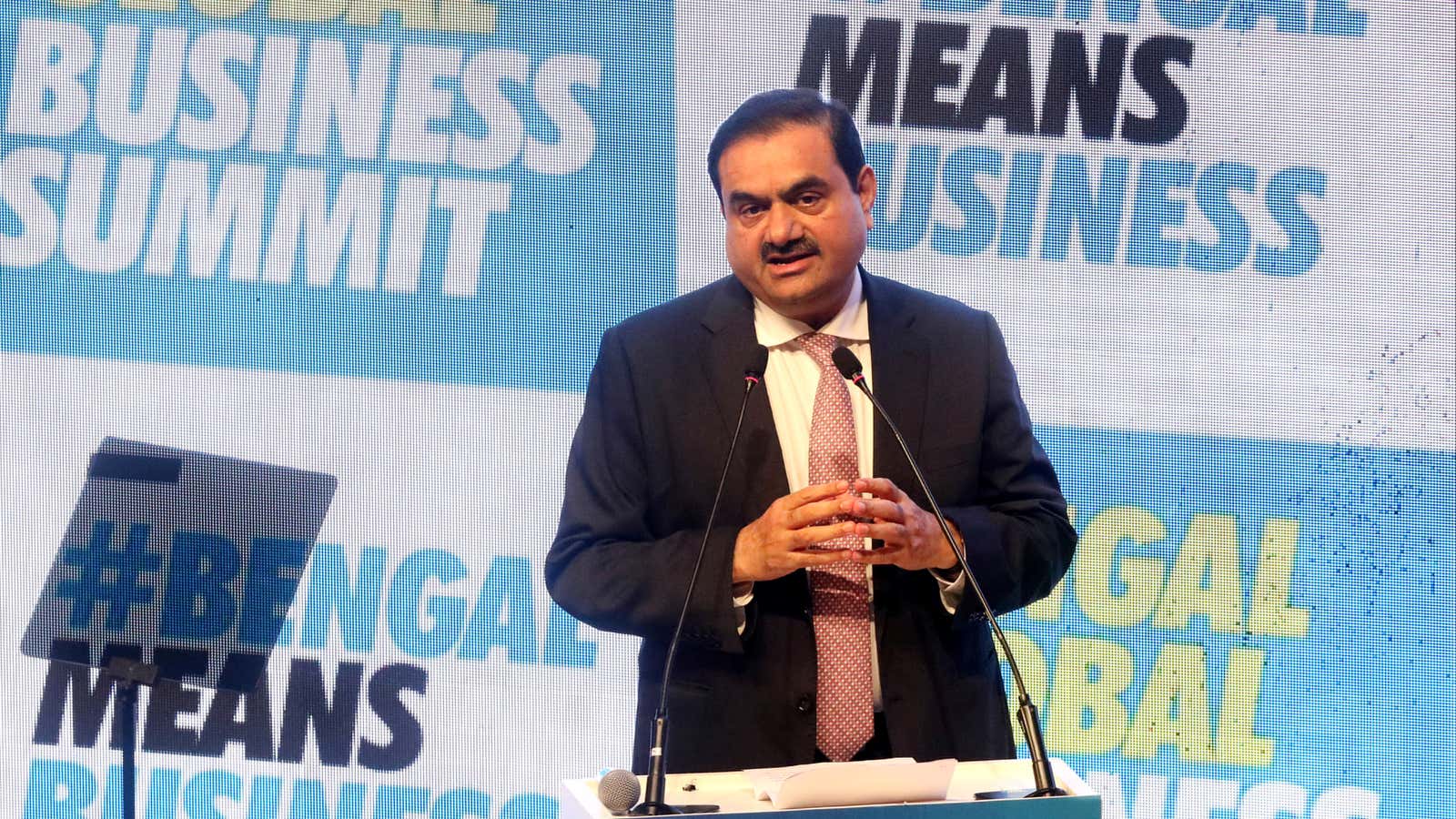India’s richest billionaires, Gautam Adani and Mukesh Ambani, are leading the country’s energy transition, with nearly $150 billion in green investments over the next few decades. That money is coming, in large part, out of the profits they’ve reaped out of their sales of fossil fuels.
Aiming to be the largest new energy player by 2030, the Adani Group recently announced setting up three “giga” factories to manufacture solar modules, wind turbines, and hydrogen electrolyzers, as a part of its $70 billion green energy push.
Last year, Ambani, the chairman of Reliance Industries (RIL), announced his plan to grab a share of India’s renewable energy space, with a massive 75,000-crore-rupee ($10 billion) investment to build a new energy ecosystem, including factories to make solar photovoltaic modules, electrolyzers, and fuel cells.
In January, RIL announced spending an additional $80 billion on green energy projects in the state of Gujarat. The conglomerate has declared a net-zero target by 2035. In Ambani’s vision, RIL alone will meet a fifth of India’s 2030 new energy target of 450 gigawatts.
A green dream based on coal and oil
How green is green energy if it’s funded by the excavation and burning of carbon?
It’s a question that applies to both Ambani and Adani. Ambani’s RIL is the biggest producer of petrochemicals in India and among the top 10 in the world. The core of its business, the Jamnagar refinery in Gujarat, is also the world’s largest oil refining hub. And even if Ambani bets that green energy will “outshine all existing growth engines” at Reliance in just “5-7 years,” RIL’s petrochemicals arm continues to rake in billions and accounts for more than half of RIL’s total income.
For the quarter that ended on June 30, Reliance reported a record 46% year-on-year jump in consolidated profit to Rs 19,443 crore ($2.5 billion) largely on the back of strong earnings from its refining business. The following quarter, however, saw a marginal profit decline of 0.17%, after India imposed windfall taxes on exports of refined petroleum products.
Ambani isn’t planning to temper down his fossil fuel ambitions, even as he barrels into the green energy sector. During RIL’s annual shareholders meet this year, he unveiled a scheme worth Rs 75,000 crore in investment to boost Reliance’s petrochemicals segment over the next five years.
Coal made Adani the world’s third-richest man
Meanwhile, the wealth of Gautam Adani—the third richest man on planet—rides on an even dirtier business: coal.
Over the past decade, Adani has invested over $3 billion in coal mines in India, Australia, and Indonesia. Adani’s controversial Carmichael coal mine project in Australia has been the focus of sustained climate activism in the country.
Although Adani Enterprises, the flagship company of the three-decades-old Adani Group, splits its portfolio into energy and utilities, transport and logistics, and emerging businesses, its primary source of revenue remains coal. Adani’s recent expansions into the green energy space have come even as he holds on to his coal projects.
For the financial year that ended on March 31, Adani’s coal mining output rose 58% year on year, to 27.7 million tons. And this is expected to rise further, given that Adani recently won bids for two more commercial coal mines.
Adani Enterprises is India’s largest private coal supplier. The group’s other subsidiary, Adani Power, also plays a crucial role in meeting the country’s coal demands through both domestic purchases from the government-run Coal India Limited as well as through imports. These two subsidiaries fulfilled more than 30% of India’s energy demand between April and June this year, when India suffered an acute coal shortage in its domestic coal-based power plants.
Why can’t Ambani and Adani quit coal and oil?
Despite their green energy ambitions, neither Ambani nor Adani will quit fossil fuels yet—quite simply because the market offers no incentive to do so. Around 70% of the power consumed in India comes from coal power plants.
Experts believe the situation will remain the same for the next few decades. A recent note published by the Central Electricity Authority (pdf), which provides a glimpse of the energy transition in India, estimates that there will be a 40% increase in domestic coal requirement by 2031-32. In 2021-22, India consumed 678 million tons of coal.
India won’t be able to make a smooth transition to clean energy because the government lacks a “clear direction of moving away from fossil fuel,” said Sunil Dahiya, an analyst at the Centre for Research on Energy and Clean Air, a Finland-based independent research organization.
“India still lacks clear sectoral direction and targets for polluting sectors,” Dahiya told Quartz. “It needs emission caps and peaking targets for all major polluting sectors in the short-, medium-, and long-term horizon.”
One model for the Indian government is the US’s recent inflation reduction act. The $370 billion plan, bundled with tax rebates, incentivizes the growth of clean energy companies in the US.
